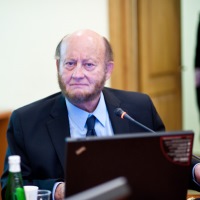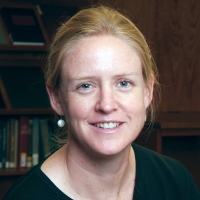Honorary and Invited Speakers
HONORARY SPEAKERS
Maurizio BUSSOLO
World Bank

Toward a New Social Contract –Taking on Distributional Tensions in Europe and Central Asia
The Europe and Central Asia region stands out as the most equal region in the world. Of the 30 countries around the globe with the lowest Gini coefficient—a measure of income inequality whereby a lower coefficient corresponds to a more equal distribution—23 are in the region.1 Compared with other regions, the countries in Europe and Central Asia redistribute income on a larger scale and have more extensive welfare systems, more progressive taxation, and more generous social protection. This reflects the strong preference of Europeans for egalitarian societies.
Yet, people in Europe and Central Asia are dissatisfied with the status quo and, as in regions that exhibit greater inequality, demand changes.2 More people are either voting for populist parties that promise to get rid of current policies and establish a new social order, or they are not voting at all. Separatist movements are on the rise, while trust in political institutions is on the decline.
The primary goal of this report is to analyze changes in the distribution of incomes and resources that, even if not fully reflected in changes of inequality among individuals and households, are affecting people’s security, aspirations, and sense of well-being and identity. When asked in opinion surveys, a large majority of people across all countries in the region expresses concerns about rising inequality. It is important to investigate the potential sources of these beliefs and views.
The report emphasizes the relevance of distributional tensions among groups and of unfairness. These reflect the economic drivers of the rising discontent with the political and social order in the region. The clash between these distributional tensions and the preferences for equity is posing a serious challenge to the social contract in Europe and Central Asia.
Thomas DOHMEN
University of Bonn, Germany

Global Evidence on Economic Preferences
(joint work with Armin Falk, Anke Becker, Benjamin Enke, David Huffman and Uwe Sunde)
This paper studies the global variation in economic preferences. For this purpose, we present the Global Preference Survey (GPS), an experimentally validated survey data set of time preference, risk preference, positive and negative reciprocity, altruism, and trust from 80,000 people in 76 countries. The data reveal substantial heterogeneity in preferences across countries, but even larger within-country heterogeneity. Across individuals, preferences vary with age, gender, and cognitive ability, yet these relationships appear partly country specific. At the country level, the data reveal correlations between preferences and biogeographic and cultural variables, such as agricultural suitability, language structure, and religion. Variation in preferences is also correlated with economic outcomes and behaviors. Within countries and subnational regions, preferences are linked to individual savings decisions, labormarket choices, and prosocial behaviors. Across countries, preferences vary with aggregate outcomes ranging from per capita income, to entrepreneurial activities, to the frequency of armed conflicts.
Bernard GROFMAN
University of California, USA

Electoral Rules and Ethnic and Gender Representation
The question I will address is “How do we structure electoral rules so as achieve representation for particular ethnic groups who are minorities in their country, or for groups, such as women, who while numerous, may have been subject to historical patterns of discrimination whose effects continue to the present? “ The first part of my presentation deals with the conditions for the creation and success of ethnic parties. Here I pay particular attention to the interaction of ethnic electoral geography with electoral rules (especially district magnitude). The second part of my remarks has as its taking off point a classic essay in 1986 by Arend Lijphart on “Proportionality by Non-PR methods” and discusses five mechanisms, including mandatory mechanisms such as ethnic rolls, reserved seats, and exemptions for particular ethnic groups of some aspects of the electoral laws; and non-mandatory methods for ethnic representation such as norms (but not requirements) for placement of ethnic candidates on party lists or as party candidates and districts geographically targeted to capture ethnic minority population concentrations –with particular emphasis on the latter. In the third part of my presentation. I shift the discussion from ethnic representation to women’s representation. Some of the same kinds of facilitative mechanisms apply in the context of gender representation as apply in the context of ethnic representation. However, we almost never observe women’s parties, and geographic districting to create districts with a concentration of women is simply not possible.
Ronald INGLEHART
University of Michigan, USA

From Authoritarian Personality to Authoritarian Reflex: Evolving Views of an Enduring Phenomenon
This article hypothesizes that, despite being based on quite different theories, two widely-investigated constructs-- the Authoritarian Personality and Materialism/Postmaterialism-- actually tap the same underlying phenomenon. To test this hypothesis in global perspective, we interviewed representative samples of the publics of the U.S., Canada, Mexico and India’s Karnataka state, using a now-standard battery to measure Authoritarianism that was developed in the 1980s, and Inglehart’s 12-item measure of Postmaterialism developed in 1973. The results indicate that Postmaterialism is the opposite pole of Authoritarianism. Moreover, both Authoritarianism and Postmaterialism seem tap the same underlying phenomenon that has been measured by many other investigators under such names as “Individualism-Collectivism," "Autonomy-Embeddedness" and "Tight vs Loose" cultures. We present evidence that high or low levels of this phenomenon are driven by high or low levels of existential security, and that it plays a major role in generating support for xenophobic populist movements. Finally, we propose an explanation for the currently high levels of support for xenophobic populism in seemingly secure high-income societies.
Maarten JANSSEN

Regulating Product Communication
Information regulation that penalizes deceptive communication by firms can have significant unintended consequences. We consider a market where competing firms communicate private information about product quality through a combination of pricing and direct communication (such as advertising or labeling) and where quality claims communicated directly may be deliberately false. A higher fine for lying reduces the reliance on price signaling, thereby lowering market power and consumption distortions; however, it may create competitive incentives for excessive disclosure.
Low fines are always worse than no fines. High fines are welfare improving only if (truthful) disclosure itself is rather inexpensive. Generally, high and low quality firms may both be worse off under fines on false claims.
Ulrich KOESTER
Kiel University, Germany

Agricultural Economics at HSE: Do we need it?
the view of an outsider
The Russian farm sector does not exploit the present production potential. Yields of crops and livestock are much lower than in comparable other countries and there is a significant yield gap across enterprises. There is a strong hypothesis that the present situation is due to lack of human capital. It is a good strategy to start with improving the endowment of human capital on the highest level of education. Consequential spill- over effects could improve human capital all over the sector. Agricultural economists have an education as applied economists with special knowledge of the agri-food sector and institutional economics. Agricultural economists find employment not only in the public sector and agri-food industry, but also in other economic sectors of the economy.
Panos M. PARDALOS
University of Florida, USA

Sustainable Interdependent Networks
Sustainable interdependent networks offer a wide spectrum of applications in such areas as computer science, electrical engineering and smart infrastructure. We plan to discuss the next generation sustainability, as well as smart cities, with a special emphasis on energy, communication, data analytics and financial networks. In addition, we will be discussing solutions in regards to the performance and security challenges of developing interdependent networks in terms of networked control systems, scalable computation platforms, and dynamic social networks.
Johan SWINNEN
KU Leuven, Belgium

A Value Chain Paradigm of World Agricultural Development: Productivity, Sustainability, Innovations
Traditional economic models have focused primarily on supply and demand models and the relationship between prices, production and consumption. These models make important, often implicit, assumptions on the underlying institutions. To better understand, and model, agricultural development, both in rich and in poor countries, it is crucial to explicitly incorporate the entire value chain between producers and consumers and agribusiness, and the institutional organization of the exchange processes within the value chain. This paradigm allows to better understand how productivity changes, how innovations may emerge and affect various agents involve, and how to make the agricultural system sustainable.
Sheikh Mufti Muhammad Taqi USMANI
Jamia Darul Uloom Karachi,

Islamic Finance in the XXI Century
The role of Islamic Finance to prevent financial crises.
David Bruce WEAVER
Griffith University, Australia

Geographic Periphery as Experiential Core: Achieving Sustainable Arctic and Regional Development in the Tourisation Era
Growing spatial disparity in Russia and other countries is manifested in vast areas of the Arctic and adjacent regions where economic insecurity and population out-migration are chronic challenges. The contention in this presentation for tourism as a compelling sector that can help to overcome these challenges is based on two innovative arguments. First, while geographic peripherality itself largely accounts for these chronic economic and social disadvantages, the former also facilitates peak experiences and attractions that simultaneously position the geographic periphery as an experiential core endowed with substantial potential competitive advantages in the international tourism arena. Concurrently, the global tourism system is continuing to expand at an unprecedented rate. Accordingly and secondly, the experiential core can capitalise on increased visitor demand in the resultant era of tourisation, or the macro-processes through which tourism is gaining economic and social influence both globally and locally, and will thus increasingly drive the world’s future economic development through a set of eight inter-related tourism impulses. How regional development in Russia and elsewhere can be driven through strategies that combine experiential core and tourisation are considered.
Sarah WILSON
The Courtauld, Institute of Art, UK

Culture and Emigration, Crowds and Power
The rise and fall of the School of Paris issues a warning to the state of contemporay art and culture today in a period of economic implosion and ‘vital exhaustion’. French modernism in the mid-20th century was almost entirely dependent upon changes in demography and labour markets resulting from first World War losses and the importing of manpower from the USSR and Central Europe. A cosmopolitain intellectual and artistic life ¬was but the epiphenomenon of newly established communities, including Russian (white and red), bound together by shared culture and the Republican the principles of Liberté, égalité, fraternité. This cosmopolitanism was permeable both to embourgeoisement, to international communist penetration and antisemitism, all relating to debates in the arts. ‘The masses’ were theorised from Gustav le Bon, and Georges Sorel to the unanimiste Jules Romain, and the visual representations of cubism and futurism. After 1933, emigré voices such as Willi Münzeberg from Germany, Nicolas Berdaiev or Ilya Ehrenburg from the USSR participated in the pro and anti-Communist debate, and its intimate relationship with economics, capitalism and anti-capitalism. Ideologies were intimately linked to representation in high art and popular culture. Sergei Chakotine’s The Rape of the Masses by Political Propaganda (Paris, 1939) was published with the subtitle the Psychology of Totalitarian Propaganda in London in 1940. It first appeared in Russian in 2016.
Today we have moved from the political concept of panem et circenses — bread and circuses to keep the masses happy — to the dangers of culture driven by spectacle and politics driven by algorithms. Propaganda has moved from walls to phones : the problem of ‘mind rape’ remains. Postwar theoreticians of the crowd such as Elias Canetti (Crowds and Power) had personal experience of fascism. Today contemporary artists attempt to address similar problems. In exile in New York, Yevgeny Fiks satirises Cold War anti-Soviet strategies, with today’s global intepentrations and stand-offs as a metatext. Commuting between Warsaw and London, Marcin Dudek or Eva Axelrad comment on crowds, power and the rise of the right. Whither 2019?
INVITED SPEAKERS
Marek DABROWSKI
Bruegel, Belgium

Moderator of Special Roundtable "Global vs. National Income Inequalities"
Zsolt DARVAS
Bruegel, Belgium

Global Interpersonal Income Inequality Decline: the Role of China and India
Speaker of Special Roundtable "Global vs. National Income Inequalities"
Global interpersonal income inequality decline: the role of China and India Income inequality discussions mostly focus on within-country inequality. We discuss the rationale for regional (e.g. within the European Union) and global interpersonal income inequality analysis and present new estimates. We show that global income inequality among the citizens of 145 countries declined significantly between 1988 and 2015, largely because of the convergence of income per capita, which was offset to a small degree by the increase in within-country inequalities and the increased population share of poorer and more unequal countries. Regional income inequality declined in most parts of the world, with the notable exception of developing Asia where it has increased. Despite the large increases in within-China and within-India inequality, income convergence of the two countries drove down global income inequality. Without China and India, global interpersonal income inequality in 143 countries was higher in 2015 than in 1988, indicating that more than half of the world has not really become more equal.
Dorothy L. ESPELAGE
University of Florida, USA

Prevention & Intervention of Youth Bullying and other Forms of Youth Aggression: Research Informed Strategies
Professor Dorothy Espelage has conducted research on youth violence for 25 years, including numerous longitudinal studies and randomized clinical trials across early and late adolescence. This translational research presentation with include a discussion of youth bullying, including face-to-face bullying, cyberbullying, gender-based bullying and sexual harassment, and teen dating violence among middle and high school students. Prevalence, definitions, and underlying risk and protective factors (e.g., individual, family, school, peers) associated with these behaviors will be presented. School-based interventions will be discussed, including social-emotional learning approaches, bystander interventions, and programs that address bias-based bullying.
Learning Objectives:
(1) To understand prevalence, types, and developmental timing of bullying and other forms of aggression.
(2) To understand the links between bullying and gender-based harassment.
(3) To be familiar with research evidence on what works to prevent these behaviors.
Ali FARAZMAND
Florida Atlantic University, USA

Role of the State and Public Administration in the Age of Contested Globalization: A Political Economy Analysis with Implications for Economic and Social Development*
This paper addresses the changing role of the state and public administration in the age of rapid globalization and, also contested globalization, with positive prospective projections. It offers: (a) historical insights on the role of the modern state in shaping policies and leading economies with growth and development on a mass scale; (b) highlights its important role of saving the capitalist systems from periodic collapse, especially in the face of self-destruction during the 1930s global Great Depression and safeguarding against recurring future depressions; and (c) a view on how the State has held the ships of nation-states and capitalist systems in the high storms ever since the 1980s when a new massive global onslaught with a two-pronged change was launched to crush its role in high sea storms: The first was (1) the rise of corporate globalization of the world with false promises through both peaceful and violent means of wars. And the second (2) was the launching of the massive transformations of the public sector and governments through (i) sweeping privatizations transferring “public” assets to “private big business hands” for profit and wealth accumulation, and (ii) the launching in the last three decades of top-down ideological policy change of New Public Management (NPM) as a strategy to change the “culture of public service” into the “ideological culture of business service as a superior management model.” These two strategies have served as powerful instruments for achieving the strategic goals of “corporate globalization of the world” (Farazmand 1999, 2007, 2009, 2017). The paper further presents the concurrent global movements of anti-globalization and Neo-Globalization as well as the global calls for bringing the State back in with enhanced role for promoting sustainable social and economic development, correcting for market failures, and engaging citizens for democratic sound governance worldwide. Policy suggestions are offered in conclusion.
* This paper presents the views of the author only, and not any institution, including Florida Atlantic University.
Carl F. FEY
Aalto University School of Business, Finland

Facilitating Innovation in Companies in Russia: The Role of Organizational Culture
In this presentation I will present research I am conducting with colleagues exploring the relationship between organizational culture and innovation. Management scholars and managers alike have much interest in how to facilitate innovation since innovation has been suggested to be critical for a firm's long-term survival and performance. I will begin by presenting results from a meta analysis of what management practices facilitates innovation and show that organizational culture is the management practice which has the largest effect on innovation. I will then present initial results from a large sample survey-based study of firms in Russia exploring the relationship between organizational culture and innovation. Rather than taking a general model of organizational culture, the study inductively develops a model of organizational culture for the Russian context. The study then explores the relationship between organizational culture and innovation to highlight what dimensions of innovation are most important as drivers of innovation in Russia. Finally, I will present results from interviews with managers of firms working in Russia to highlight implementation issues related to the study's findings. The work which I am presenting is work in progress.
David GARCIA
Complexity Science Hub Vienna and Medical University of Vienna, Austria

Collective Emotions and Social Resilience in the Digital Traces After a Terrorist Attack
After collective traumas such as natural disasters and terrorist attacks, members of concerned communities experience intense emotions and talk profusely about them. Although these exchanges resemble simple emotional venting, Durkheim’s theory of collective effervescence postulates that these collective emotions lead to higher levels of solidarity in the affected community. We present the first large-scale test of this theory through the analysis of digital traces of 62,114 Twitter users after the Paris terrorist attacks of November 2015. We found a collective negative emotional response followed by a marked long-term increase in the use of lexical indicators related to solidarity. Expressions of social processes, prosocial behavior, and positive affect were higher in the months after the attacks for the individuals who participated to a higher degree in the collective emotion. Our findings support the conclusion that collective emotions after a disaster are associated with higher solidarity, revealing the social resilience of a community.
Graeme GILL
University of Sydney, Australia

Stabilizing Authoritarian Regimes: Leadership Norms and Elite Dynamics
Much scholarly attention has shifted from democratization to a recognition of authoritarian resilience, of how authoritarian regimes have been able to stabilize themselves and remain in power for a considerable period of time. Recognition that regime change is more often a result of splits within the elite than it is of mobilization in the streets points to the need to understand why some authoritarian elites have been able to prevent disunity and consolidate themselves in power. This suggests that the notion of authoritarian rule consisting of a dictator who is able to wield arbitrary power without constraint may require modification, at least in some cases. This paper will posit that there are five sorts of rules that are commonly found structuring elite politics in authoritarian regimes: decision rules, rules of comportment governing behaviour, rules structuring membership of the oligarchy, principles relating to succession, and norms about the relationship between the oligarchy and the broader elite. The lecture will outline the nature of these different sorts of rules and give some examples of where they operate.
Madeleine HOSLI
Leiden University, Netherland

European Parliament Elections: Estimating Adapted Turnout Rates
Has turnout in European Parliamentary elections decreased over time? While this certainly appears to be the case in absolute terms, a more nuanced analysis, replicating a study presented by Mark Franklin in 2001, reveals a more complex picture. When ‘structural factors’ such as compulsory voting, the effect of EP elections being held for the first time in an EU member state, ‘electoral salience’ (measured as the temporal distance to the next national parliamentary election) and the share of post-2004 countries in the total EU membership are accounted for, our analysis reveals that these can partially explain the observed lowering in real turnout rates. The explanatory power of the models capturing the situation in the aftermath of the 1999 EP elections are, however, lower than when they are applied to earlier EP elections. This leads to the additional observation that while structural factors offer a plausible explanation for the decline in EP turnout rates over time, their relative influence is gradually decreasing.
Tobin IM
Seoul National University, South Korea

Government Competitiveness and Bureaucratic Reforms
This speech will discuss several issues I consider vital for improving government competitiveness in Eastern Europe. I discovered that despite the role of government is important in the region, public administration has been understudied. More governance studies on Eastern European countries with respect to performance will benefit scholars as well as policymakers. I will present key characteristics of Government Competitiveness in order to explain the necessity of making a different index from the existing indices such as IMD, World Bank, Quality of Governance etc. Based on the theoretical background, I will present rankings of government competitiveness 2018 and give some sectoral analysis of the ranking. For example, Russian government achieved significant progresses as well as showed some weaknesses, compared with last year.
Over the last two decades, many Western-style reforms were proselytized and implemented in developing countries without considering their unique contexts, which results in many problems. Understanding this problem of fitness will help developing countries set different expectations, targets, and institutions for their own improvement of public organizations. To name a few of many challenges, there are lack of capacity in implementing personnel and data management, lack of clear line of command between upper-level and lower-level agencies, insufficient logic and incentives for public employees to pursue performance-oriented reforms, seniority-based civil service, and bureaucracy not responding to reforms. Unless these challenges are considered in a way to fit reform ideas and ideals with the existing institutional settings in developing countries, reforms will remain only as “window-dressing”; in other words, reforms are presented to the public, but they are not implemented as much or there are no internal mechanisms to implement them within each public organization. Korea has assiduously followed US-style reforms for many years. But the reforms have often produced worse outcomes than before. Conceptions of human relations, bureaucrats, Confucian principle of human nature, notions of monetary incentive compared to promotion, and formalization or red tape are widely different between Korea and the United States. Once these details are accounted for, it is no wonder that some reforms have generated markedly different outcomes than what was intended at the beginning.
Stephanie M. JONES
Harvard Graduate School of Education, USA

The Science and Practice of Social, Emotional, and Character Development in Schools
There is a growing body of evidence describing the critical role that social, emotional, and character skills and related interventions play in children’s mental health, behavioral, and academic success. However, those working with children in schools and other contexts are confronted with a large, sometimes confusing array of terms, definitions, and approaches. In this presentation Jones will review research on the nature, content, and efficacy of social and emotional learning as well as character-focused strategies and programs designed for early and middle childhood. She will describe new translational work designed to build connections between the major conceptual and practice-focused frameworks for the field, summarize a number of tensions in this area, and discuss the opportunities they present for future research and practice.
Hanspeter KRIESI
European University Institute, Italy

The Political Consequences of the Great Recession: Key Results of the POLCON Project
The keynote will attempt to provide an overview over key results from the POLCON project, which has studied the political consequences of the Great Recession in the electoral arena and in the protest arena in the three regions of Europe (northwestern, southern and central-eastern Europe). Based on the results of the project, I will address the question of whether the Great Recession was a critical juncture for European politics. The answer will differ according to the region considered. While northwestern Europe followed a scenario of continuity, central-eastern Europe one of consolidation, it was above all in southern Europe that we witnessed a profound transformation of political competition in the party system. This transformation, I am going to argue, was to an important extent driven by a wave of public economic protest which swept across southern Europe during the Euro crisis and which was the combined result of deep economic and political grievances.
Mariano LAPLANE
University of Campinas (Unicamp), Brazil
Current Challenges for Development: a Latin American Perspective
Latin American countries are in the process of rethinking its future development potential. The prospects for the long run performance of the world economy are unclear. The World Order itself is far from stable. Even in this uncertain context at least two important sources of opportunities and threats can be identified: innovation trajectories with far reaching potential impacts on production and consumption patterns and growing restrictions arising from climate change. On the domestic front, important conditioning factors are also in place: local economies are increasingly controlled by global companies, local elites have also become more involved in global business and the ability of Latin American States to lead the development process is restricted by fiscal constraints, institutional downgrading and polarization of public opinion. The lecture will explore the viability of a development strategy for the region that aims to take advantage of the opportunities without ignoring threats and weaknesses.
Brent D. MOYLE
University of the Sunshine Coast, Australia

The Role of Innovation in Tourism Experience Design for Sustainable Economic Development of Remote Destinations
All too often, researchers tend to assess the impacts of a tourism development after it has occurred, rather than working with communities to ensure a long-term sustainable solution from the beginning. This keynote speech will showcase how a unique collaboration between university, government and industry led to the development of a virtual rocket Charleville Cosmos Centre in regional Queensland, Australia. Specifically, the presentation will detail how cognitive psychology, combined with the principles of experience design, led to the revitalisation of an asset vital for the economic and social sustainability of a regional community.
The keynote will detail the outcomes of research including though not limited to a best practice review of 20 similar centres from around the world to identify a unique point of market differentiation, the outcomes of audit of visitor experiences and over 60 interviews with staff, the Charleville community and visitors. Following this the keynote will demonstrate how other key stakeholders, such as local government and regional and state tourism bodies were engaged through focus groups to develop a clear vision for the Cosmos Centre. Finally, the presentation will detail how physiological measures were used to test the experiences integrated into the centre. The keynote will also demonstrate how theory was integrated into the process, specifically cognitive appraisal theory.
Combining industry, government and university expertise and resources helped to meet an extremely tight deadline and limited budget to assist a regional community to ensure one of its most vital tourism assets was operational prior to the opening of the season. As an outcome of the collaboration visitor numbers doubled compared to the previous season. The success of the collaboration caught the attention of state level government departments, such as the Department of State Development (DSD) and the Department of Science Information Technology and Innovation (DSITI). For instance, as an outcome of the Cosmos Centre report the Murweh Shire Council received funding from DSD to create a planetarium to reduce the impacts of cloudy nights, with construction scheduled to take place in April 2018.
The core message of this keynote speech will be that researchers should remember that focus determines reality. While transitioning between university, industry and government can feel like walking on a tightrope the benefits far outweigh the risk of falling, both for government, universities and for business. Being part of the development process right from the start has made me realise that for research to make an impact we need to think of ourselves as part of the transformation process. This creation of the virtual rocket taught me that universities provide vital expertise and cutting-edge research which has the capacity to contribute to tourist experience development not only in the design phase but also in its evaluation. Translating scientific knowledge into tourism planning and business management is not only rewarding for the researcher but may help stoke the fire of innovation needed to remain competitive and create thriving, sustainable tourism attractions.
Friedrich PUKELSHEIM
Universität Augsburg, Germany

Analysis of Proportional Representation Systems
Proportional representation systems determine how individual citizens, who are many, are represented by Members of Parliament, who are but a few. The same representational problem arises when Political Groups in Parliament must determine the members of a committee of a size much smaller than Parliament, or when geographical districts are to be represented in Parliament proportionally to population figures. Inevitably, proportional representation culminates in the task of translating numbers into numbers, namely, large numbers of those to be represented, into small numbers of those serving as representatives. The task is solved by procedures called apportionment methods. The lecture will analyze apportionment methods, scrutinize their structural properties, and illustrate their applications.
Vladimir M. SHKOLNIKOV
Max Planck Institute for Demographic Research, Germany

The Burden of Excess Mortality Rates and Factors Underlying its Reduction in Russia
(joint work with E. Andreev)
In the mid-1960s, Russia came very close to Finland in terms of life expectancy (LE). However, in 1965, life expectancy in Russia started to go down. This negative trend continued for another four decades and prevailed until the mid-2000s. If mortality rates in Russia after 1965 had been the same as in Finland, we would have had 25 million more citizens in 2017.
Two key factors underlying excessive mortality rates in Russia include (1) working-age mortality caused by alcohol abuse, accidents and violence, which has been consistently growing; (2) the mortality among elderly persons caused mainly by cardiovascular diseases, which has remained equally high throughout the four decades, while it has been going down in other countries.
In 2005-2017, Russia had not only managed to reduce its mortality rates caused by alcohol abuse and other external factors by 50% - 80%, but also for the first time in its history experienced a significant drop in the cardiovascular mortality among elderly persons. In terms of mortality structure by the age and risk factors, Russia roughly follows Estonia’s pattern with an approx. 8-9 calendar year delay.
In spite of all these achievements, Russia is still largely lagging behind countries with low mortality rates. The life expectancy gap comes to 12 years for men and 5 years for women. If we have a look at the Preston curve, we will see that the life expectancy rates in Russia could have been 6.5 years higher in view of the per capita GDP achieved in 2017. Excessive mortality rates in Russia are rooted not only and not so much in the lack of resources, but rather in their suboptimal distribution and inefficient use.
John SKVORETZ
University of South Florida, USA

What Mathematical Sociology Reveals about the Problem of Integrating Diverse Societies: Advances in the Analysis of Networks of Intergroup Relations, Attraction vs Repulsion Models
Modern societies are diverse on many dimensions: race and ethnicity, social class, educational attainment, age, gender orientation, political persuasion, religious affiliation, and nativity, the last of increasing importance with recent migration waves. How such societies maintain a level of coherence, of social integration between these diverse groups, is a fundamental question of contemporary significance. Understanding the basic principles that produce or fail to produce social integration – unity among diversity – is a foundational one in sociology. The work we present advances understanding of the network of intergroup relations through the analysis of two contrasting mechanisms by which population diversity conditions the formation of intergroup social ties. The first mechanism is based on the idea that individuals form social ties with others based on “attraction” to those who are similar to them along important social dimensions. The second mechanism asserts that the driving force in tie formation is “repulsion” from those who differ on these important social dimensions. In the first case, the overrepresentation of ties between persons of similar background is a direct consequence of an “inbreeding” bias while in the second case, it is an indirect consequence of a “rejection” bias directed at dissimilar others. As the talk demonstrates, techniques from mathematical sociology provide formal models that offer strong and competing hypotheses about patterns in intergroup relations.
Ben SLAY
UNDP Regional Hub for Europe and Central Asia, Turkey

Inequalities in Middle-income Europe and Central Asia – A Tale of Three Studies
Speaker of Special Roundtable "Global vs. National Income Inequalities"
Most scholarly analyses of socio-economic inequalities have in the past focused on income inequality in OECD countries, in the developing world, or globally. Few have focused on the specifics of inequalities in the post-communist economies of Europe and Central Asia. In part as a result of this gap, two sorts of stylized narratives emerged in this region: (i) “paradise lost” narratives that bemoan the post-communist appearance/rise in inequalities in these countries, without recognition of the damages done by the (often violent and damaging) social levelling employed to address pre-socialist inequalities; and (ii) “inequality is good” narratives extolling the benefits of growth, entrepreneurship, and returns to national traditions, without recognizing the importance of popular anger against perceived growth in inequalities and fraying social contracts and genuine pride in pre-1990 equality and emancipation. Fortunately, three recent studies on inequalities in these countries – UNDP’s 2016 Progress at Risk regional human development report, the EBRD’s 2016-2017 Equal Opportunities in an Unequal World transition report; and the Council of Europe Development Bank’s 2018 An Introduction to Inequality in Europe (and related social investment publications) – go a long way towards filling this gap. But they also raise new questions that remain in search of answers. The presentation will compare and contrast these three publications, and point to possible future directions in research on socio-economic inequalities in these countries.
Jacques-François THISSE
Université Catholique de Louvain – UCLouvain, Belgium

About the Origin of Cities
We provide a bare–bones framework that uncovers the circumstances which lead either to the emergence of equally-spaced and equally-sized central places or to a hierarchy of central places. We show how these patterns reflect the preferences of agents and the efficiency of transportation and communication technologies. With one population of homogeneous individuals, the economy is characterized by a uniform distribution or by a periodic distribution of central places having the same size. The interaction between two distinct populations may give rise to a hierarchy of central places with one or several primate cities.
Lucan Alan WAY
University of Toronto, Canada

Pluralism by Default: the sources of democracy in hard places
The end of the Cold War saw the emergence of democratic or nearly democratic regimes in countries with weak democratic prerequisites – endemic poverty, illiteracy, or a high degree of ethnolinguistic and religious difference. Albania and Macedonia in Eastern Europe; Kyrgyzstan and Moldova in the former Soviet Union; Benin, Mali, and Senegal in Africa witnessed the rise and persistence of competitive authoritarian and democratic institutions familiar to Western observers: regular and competitive elections, powerful legislatures, and free media. Indeed, the share of democracies among low and lower-middle income countries nearly doubled from the mid-1980s to the 2000s.
I argue that pluralism in "new democracies" is often grounded less in democratic leadership or emerging civil society and more in the failure of authoritarianism. Democratic competition frequently emerges because autocrats lack the state capacity to steal elections, impose censorship, or repress opposition. In fact, the same institutional failures that facilitate political competition may also thwart the development of stable democracy.
Christian WELZEL
Leuphana University of Lunebrg, Germany

Measurement Equivalence? A Tale of False Obsessions and a Cure
Due to the exponential growth of computational power in statistics software, “Multi-Group Confirmatory Factor Analysis” (MGCFA) has quickly become the gold standard of establishing measurement equivalence in cross-cultural research. The key premise of MGCFA is that country-wise variability in the factor solutions of multi-item constructs renders country means incomparable, which essentially debunks the affected constructs as useless in cross-cultural research. We argue that this approach gets the dependency structure of country means and factor solutions wrong and has, thus, established a flawed logic of cross-cultural comparison. To support our argument, we reveal a basic but widely ignored truth: when country means scatter over most of the scale range of a construct—which is certain in cross-cultural settings—variability in factor solutions is inevitable. The reason for this truism is strikingly simple (although largely unknown): factor solutions are a mathematical derivative of the means’ scale positions. In other words, factor solutions depend on country means. Given this dependency structure, the MGCFA-assumption that country means are incomparable across varying factor solutions needs to be turned upside down to get the logic of comparison straight again: factor solutions are incomparable across varying country means. After establishing this logical principle, we demonstrate empirically that MGCFA’s focus on variability in factor solutions is altogether irrelevant to measurement equivalence properly understood, which is present when similar country means map in similar fashion on other variables of interest. Our insights re-enforce Welzel and Inglehart’s conclusion that the cross-cultural comparability of multi-item constructs should be judged by the strength of their external linkages, instead of the invariance of their internal cohesion.